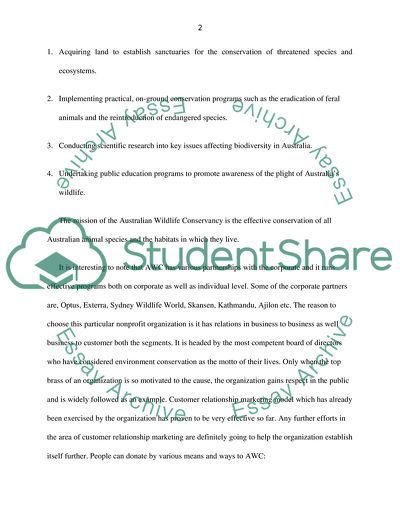Cite this document
(Relationship Marketing and Development for Nonprofit Organizations Research Paper, n.d.)
Relationship Marketing and Development for Nonprofit Organizations Research Paper. Retrieved from https://studentshare.org/marketing/1736409-your-assignment-topic-for-this-term-is-how-might-crm-be-used-in-a-not-for-profit-setting-such-as-charitable-fund-raising
Relationship Marketing and Development for Nonprofit Organizations Research Paper. Retrieved from https://studentshare.org/marketing/1736409-your-assignment-topic-for-this-term-is-how-might-crm-be-used-in-a-not-for-profit-setting-such-as-charitable-fund-raising
(Relationship Marketing and Development for Nonprofit Organizations Research Paper)
Relationship Marketing and Development for Nonprofit Organizations Research Paper. https://studentshare.org/marketing/1736409-your-assignment-topic-for-this-term-is-how-might-crm-be-used-in-a-not-for-profit-setting-such-as-charitable-fund-raising.
Relationship Marketing and Development for Nonprofit Organizations Research Paper. https://studentshare.org/marketing/1736409-your-assignment-topic-for-this-term-is-how-might-crm-be-used-in-a-not-for-profit-setting-such-as-charitable-fund-raising.
“Relationship Marketing and Development for Nonprofit Organizations Research Paper”, n.d. https://studentshare.org/marketing/1736409-your-assignment-topic-for-this-term-is-how-might-crm-be-used-in-a-not-for-profit-setting-such-as-charitable-fund-raising.


